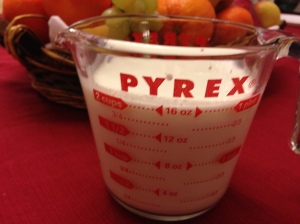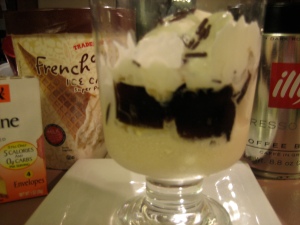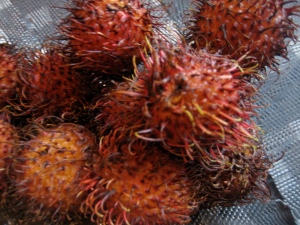Panna Cotta is an Italian dessert made by simmering cream, sugar, and gelatin. Fresh fruits usually top this dessert.
Although this is not of Philippine origin, this can easily be tweaked to highlight Filipino flavors.
Mangoes are the fruits that first come to mind to flavor this dessert. They are abundant in the Philippines (and they are my favorite!) It is also a fruit that can easily be pureed and incorporated into the mixture. Diced golden ripe mangoes would the perfect topping.
I made this dessert for our New Year’s Eve meal. I would have loved to use mangoes, but mangoes are not in season.
So, I did what a good cook does– use what is in season or what I have readily available. In this case, I had raspberries and blueberries (not in season either, but I had them in the fridge.)
If you are going to flavor the cream with real mangoes, puree 1 cup of ripe mangoes and mix with the cream mixture after the gelatin and sugar have been dissolved. And instead of using two packets of unflavored gelatin, use three packets.
Panna Cotta
1 cup whole milk
2 tablespoons unflavored powdered gelatin
3 cups half and half or whipping cream
1/3 cup honey
1 tablespoon sugar
Pinch salt
2 cups assorted fresh berries
Place the milk in a heavy saucepan and sprinkle the gelatin over. Let stand for 3 to 5 minutes to soften the gelatin. Over medium heat, dissolve the gelatin being careful not to boil the milk, about 5 minutes. Add the cream, honey, sugar, and salt.
Stir until the sugar dissolves, 5 to 7 minutes. Remove from the heat. (Add the pureed mango at this point if you are making Mango Panna Cotta).
Pour into 6 flute glasses or clear bowls, so that they are 1/2 full. Cool slightly. Refrigerate until set, at least 6 hours.
You can speed up the molding process by putting in the freezer for 45 minutes. Transfer to the refrigerator until ready to serve.
Spoon the berries (or mangoes) on top and serve.
This is a recipe that can be played around with. Obviously, the higher the fat content of the cream, the richer the dessert would be.
I have substituted half and half with whipping cream, and it still tasted delicious. I have also used only 2 cups half and half and 2 cups whole milk and it was still good.
My point is you can make this dessert as rich (use whipping cream) or as less fatty (use low fat milk) and it will still come out fancy.


























